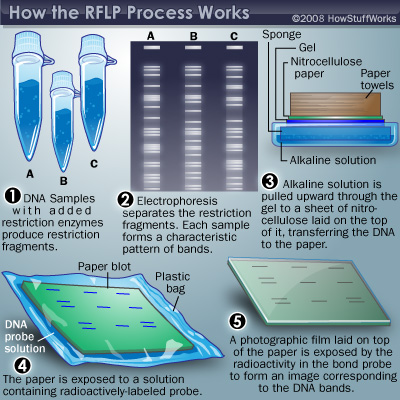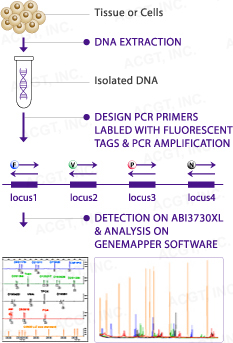Introduction to Fingerprinting
Every person has their own particular pattern in their fingerprints. Their fingerprints are like a persons’ identity. DNA fingerprinting is mainly used for these reasons:
· Identity profiling
· Paternity testing
· Criminal cases
Since 1985, with the help of Sir Alec Jefferys, DNA fingerprinting has been used in criminal cases when identification is needed. Jefferys had noted the differences between people based on their DNA fingerprints. Since then, there have been advancements made in the styles and techniques for extracting DNA samples. Today, there are four different types of methods for DNA identification: RFLP, PCR, AmpFLP, and STR. (Citation #6)
Methods
1. RFLP stands for restriction fragment length polymorphism. This method analyses the length of the strands of different DNA molecules. The DNA is broken into small pieces by restriction enzymes. Then all those small pieces become separated by gel electrophoresis. RFLP, unfortunately, is not used as much anymore.(Citation #6)

2. PCR, which stands for polymerase chain reaction is ally used for DNA fingerprinting and paternity testing. PCR is used to enlarge a few pieces of DNA which would create thousands to millions of copies of that one sample of DNA. (Citation #6)
3. AmpFLP is the acronym for amplified fragment length polymorphism. This method is commonly used because it is less complicated and cost-effective. Even though it is less complicated, many errors occur using this method because there are issues with combining the VTRN which causes misidentifications. (Citation #6)
4. STR, which is short tandem repeat, is the most widely used during criminal investigations. STR analyzes how many times base pairs repeat themselves on a particular location on a strand of DNA. This method is a PCR-based tool because it uses some components of the PCR method. (Citation #6)
